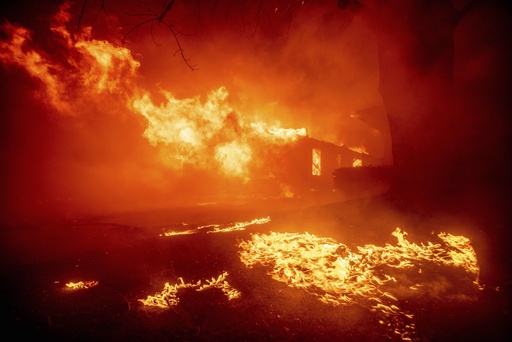Wildfires in Los Angeles triggered an unprecedented wave of donations, exceeding $650 million. This massive outpouring of support shattered records and raised the question: How should this money be spent for recovery?
Record-breaking contributions
The response to California’s devastating fires has been nothing short of extraordinary. From individuals to big corporations, donations flooded in to help those affected. Thousands of organizations, including famous charities like United Way and Habitat for Humanity, benefited. Even smaller causes, like replacing burned musical instruments or stuffed animals, received help.
Over the past month, fundraising efforts have totaled more than $650 million, setting a new record for wildfire relief. This amount far surpasses donations for other natural disasters. Maui’s fire in 2023 raised $450 million, while the southeastern U.S. hurricanes brought in about $278 million. The huge sum raised for the California fires reflects both the massive damage and the emotional connection people have with Los Angeles, including Hollywood’s impact.
Star power and special events drive donations
Celebrities have played a key role in raising funds. At the Grammy Awards on February 2, stars like Billie Eilish and Stevie Wonder called for donations. A FireAid concert, featuring major acts like the Red Hot Chili Peppers, is expected to raise $125 million alone. These efforts show the depth of support for fire victims.
Immediate relief: How funds are being used
Hundreds of millions of dollars have already been put to use. GoFundMe campaigns raised more than $200 million, helping individuals and families who lost everything. Charities quickly converted donations into cash to help evacuees, offering immediate relief.
Wade Trimmer, president of Change Reaction, shared that they distributed around $5 million in direct assistance to those in need. Many recipients were elderly people who urgently needed support for basic needs. The L.A. Regional Food Bank, which raised $5 million, set up distribution points throughout the region, operating longer hours to meet the growing demand.

Community support continues
Other groups, such as the Dena Relief Drive, helped victims with essential supplies. Within days of the fire, they provided shoes, clothes, and even laptops for students whose computers had burned. In addition, $80,000 in grocery and lodging gift cards were handed out to help families facing unexpected costs.
The California Community Foundation has been a major player in this relief effort. The foundation raised $60 million and already distributed half of it. They also provided $100,000 to 11 churches and places of worship that were destroyed, including St. Mark’s Episcopal Church in Altadena. Despite the destruction, many local organizations are already planning how to rebuild and help people move forward.
Transitioning to long-term recovery
While immediate relief efforts have made a significant impact, the conversation is shifting to long-term recovery. A month after the fires, 300 people were still staying in Red Cross shelters. Nonprofits are keeping a close eye on these numbers, as it will be an important metric for when to begin recovery efforts in earnest.
Jennifer Gray Thompson, of After the Fire USA, has worked with communities affected by wildfires and offered advice on navigating the long rebuilding process. She emphasized that recovery will take years, not months. “It’s a marathon of sprints,” she said, urging nonprofits to hold enough funds for long-term efforts.
Complexities in allocating funds
The process of spending the money is not straightforward. While many local organizations have already made strides, others are still figuring out how to best allocate resources. With billions of dollars in federal aid expected, as well as insurance payouts and lawsuits, the funding landscape is complicated. Nonprofits are working hard to avoid duplication of efforts and to ensure funds are spent efficiently.
Several nonprofit leaders have also discussed where the money should go. Mental health services for both first responders and survivors are at the top of the list. Training displaced workers for construction jobs is another priority. Providing grants for underinsured individuals and creating land trusts to prevent speculators from taking advantage of the situation are also important.
Focus on the vulnerable
Many experts believe that the most vulnerable communities should be prioritized. As Miguel Santana, CEO of the California Community Foundation, pointed out, recovery systems are often difficult for those who don’t have the resources or knowledge to navigate them. Charitable funds should focus on helping those in most need.
Jenni Campbell, of the L.A. Region Community Recovery Organization, emphasized that understanding the unmet needs of the community is key. In the coming months, a disaster case management system will gather detailed information about families and individuals, providing deeper insight into where support is most needed.
What’s next for fire recovery?
The road to full recovery will take years, and the charitable dollars raised will be crucial in ensuring that rebuilding efforts continue. The nonprofit sector is already preparing for the long haul, carefully balancing immediate relief with plans for the future.
As donations continue to pour in, the focus now turns to how to manage and distribute the funds. Will the philanthropic community be able to coordinate efforts and avoid waste? Only time will tell, but one thing is clear: the generosity of people worldwide is making a real difference in the lives of those affected by the Los Angeles wildfires.